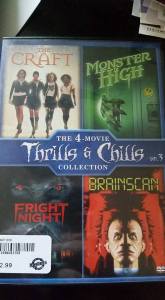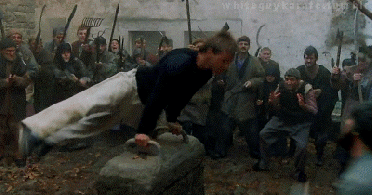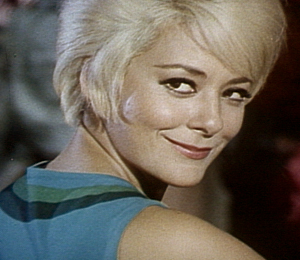The Punisher
Today’s movie is a lesser-known early Marvel comic book adaptation: 1989’s The Punisher.
The Punisher is a character who was initially created by Gerry Conway, Ross Andru, and John Romita, Sr. for Marvel, and he was debuted in The Amazing Spider-Man issue #129 in 1974. 1989’s The Punisher marked his first appearance in a film, though not his last: two other high profile movies were created with the character in 2004 (The Punisher) and 2008 (Punisher: War Zone), and an upcoming television series starring the character is currently in the works as part of the greater Marvel cinematic universe.
The writer for The Punisher was Boaz Yakin, who also penned From Dusk Til Dawn 2, The Rookie, and Prince of Persia: The Sands of Time, and also directed movies like Remember The Titans and Uptown Girls.
The Punisher was directed by Mark Goldblatt, who is best known as the proficient editor of such movies as Predator 2, Enter The Ninja, Humanoids From The Deep, Piranha, Super Mario Bros, The Howling, Commando, The Terminator, and Terminator 2: Judgement Day. The Punisher is one of only two feature-length directorial efforts by Goldblatt, the other being the buddy cop zombie flick Dead Heat.
The editor for The Punisher was Tim Wellburn, who also cut the Stuart Gordon flick Fortress and the BeastMaster television series. The cinematographer for the film was Ian Baker, who also shot such movies as Queen of the Damned, Evan Almighty, and Roxanne.
The musical score for The Punisher was composed by Dennis Dreith, who has worked as an orchestrator on movies like The Rock, Jurassic Park, and Misery.
The visual effects for The Punisher were done by one Roger Cowland, who has worked on such films as Babe, The Piano, Mad Max: Beyond Thunderdome, and The Howling III.
The Punisher special effects and makeup teams included common elements with movies like The Matrix, The Road Warrior, Street Fighter, Fortress, Crocodile Dundee II, Razorback, and Mad Max, among others.
One of the producers for The Punisher was Robert Mark Kamen, an accomplished action movie writer who penned screenplays for such movies as Taken, The Transporter, The Fifth Element, Lethal Weapon 3, and The Karate Kid.
The cast for The Punisher includes Dolph Lundgren (Masters of the Universe, Dark Angel, Rocky IV), Louis Gossett Jr. (Iron Eagle, Jaws 3-D), Jeroen Krabbé (The Fugitive, The Living Daylights), Barry Otto (The Great Gatsby, The Howling III), Nancy Everhard (DeepStar Six), and Kim Miyori (Metro).
 The plot of The Punisher follows Frank Castle, an ex-cop turned vigilante who hunts down and executes members of the mafia and other criminal figures. After 5 years of his activities, the local criminal scene has weakened considerably, but the vacancy also attracts the interest of a foreign criminal power: the Yakuza. After the Yakuza attempts to seize the remaining operations of the mafia by kidnapping the surviving leadership’s children, Castle winds up making strange allies through his efforts to save the children and put the Yakuza down.
The plot of The Punisher follows Frank Castle, an ex-cop turned vigilante who hunts down and executes members of the mafia and other criminal figures. After 5 years of his activities, the local criminal scene has weakened considerably, but the vacancy also attracts the interest of a foreign criminal power: the Yakuza. After the Yakuza attempts to seize the remaining operations of the mafia by kidnapping the surviving leadership’s children, Castle winds up making strange allies through his efforts to save the children and put the Yakuza down.
 Reportedly, most of the fight choreography for the film was done with full contact, given professional martial artists were hired for the fighting roles instead of stuntmen. Dolph Lundgren did most of his own stunts for his role as well, given his martial arts background.
Reportedly, most of the fight choreography for the film was done with full contact, given professional martial artists were hired for the fighting roles instead of stuntmen. Dolph Lundgren did most of his own stunts for his role as well, given his martial arts background.
The Punisher is one of the best known “Ozploitation” action movies: meaning it was filmed in Australia, and done with extreme violence on an exploitation level.
A sequel to the movie was at one point planned, but the production company (New World Pictures) wound up going bankrupt before it could happen.
The Punisher interestingly did not theatrically release in the United States, due to the aforementioned bankruptcy of the production company. However, it managed to distribute to theaters internationally (at least, in places where it wasn’t outright banned), and popped up on home video shortly thereafter.
The beginning of The Punisher features a thinly-veiled version of John Gotti, one of the most well-known gangsters of the modern era. In 1989 (the year of this film’s release), he was still two years off from his ultimate conviction and incarceration, but was very much a public and recognizable figure as a crime boss. While the character isn’t explicitly named John Gotti in the movie, he is referred to as “The Dapper Don,” a well-known nick-name of Gotti’s.
The reception to The Punisher was generally negative: it currently holds Rotten Tomatoes scores of 28% (critics) and 32% (audience), along with an IMDb rating of 5.6. However, it has a dedicated cult following in spite of the bad reviews.
 The Punisher has a great grimy look and feel to it, which is definitely a credit to this being an exploitation-style action movie. Honestly, I think this ambiance fits The Punisher as a character better than the other adaptations, though I don’t hate either of those films as much as some people do. As weird as Lundgren’s casting might seem at first glance, I think he nails the spirit of the character pretty well. Also, it is hard not to appreciate that this movie isn’t an origin story, and that the plot the screenwriter came up with is actually pretty cool, and deals with a realistic consequence of the presence of a Punisher-style vigilante.
The Punisher has a great grimy look and feel to it, which is definitely a credit to this being an exploitation-style action movie. Honestly, I think this ambiance fits The Punisher as a character better than the other adaptations, though I don’t hate either of those films as much as some people do. As weird as Lundgren’s casting might seem at first glance, I think he nails the spirit of the character pretty well. Also, it is hard not to appreciate that this movie isn’t an origin story, and that the plot the screenwriter came up with is actually pretty cool, and deals with a realistic consequence of the presence of a Punisher-style vigilante.
 I have never understood why so many people vocally hate this movie. The absence of the iconic skull image is certainly notable, but that actually strikes me as pretty minute on the grand scale of things. This movie is over-the-top violence and action, which is basically what the spirit of The Punisher is all about. Dolph even does a pretty good job with his lines, which is likely the result of him being given permission to rewrite them for his comfort level. I feel like it is a real shame that Goldblatt hasn’t directed any other movies, as both Dead Heat and The Punisher are entertaining flicks that have become cult classics.
I have never understood why so many people vocally hate this movie. The absence of the iconic skull image is certainly notable, but that actually strikes me as pretty minute on the grand scale of things. This movie is over-the-top violence and action, which is basically what the spirit of The Punisher is all about. Dolph even does a pretty good job with his lines, which is likely the result of him being given permission to rewrite them for his comfort level. I feel like it is a real shame that Goldblatt hasn’t directed any other movies, as both Dead Heat and The Punisher are entertaining flicks that have become cult classics.
I definitely recommend checking this movie out, as it is probably the best of the Marvel movies made before the modern era of the Marvel Cinematic Universe, Sony’s Spider-Man flicks, and Fox’s X-men franchise. I think b-movie and action fans in particular will enjoy this adaptation, perhaps more so than die-hard fans of the comics.
![Misan[trope]y](https://misantropey.files.wordpress.com/2014/10/misantropeyhead1.png)









































